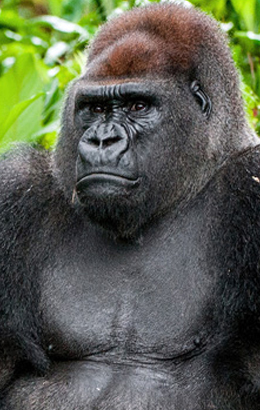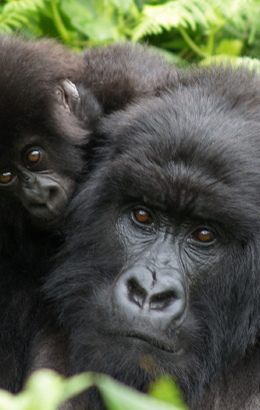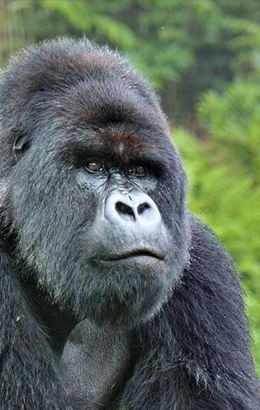To stay or go? The big choice facing female gorillas…
Like humans, gorillas are social animals. They live in complex and dynamic groups and their social interactions have been the source of much study over the years.
Understandably, adult males – the silverbacks – have received the most attention. These powerful apes are the leaders of their groups, deciding where the females, infants and even younger males they look after will eat and sleep. They will also take control of deciding if a newcomer can join their group – often using force to keep out unwanted challenges to their dominance.
However, the social behaviour of female gorillas is equally fascinating, not least because it varies so much between the different sub-species.
Generally speaking, all gorilla females reach sexual maturity at around eight years old. It’s at this point they have a big decision to make: Do they stay in the group they grew up in, or do they take a risk, leave and hope to find a new group to join?
The choice an individual female gorilla will make will usually depend on two important factors: whether they are a western gorilla, or whether they are a mountain gorilla. Why is this important? Well, western lowland gorillas tend to live in smaller groups. This isn’t because they are less social. Rather it’s down to the fact that where they live, that is in low-altitude forests, one of their main sources of food is fruit. Now, fruit trees are usually clumped together instead of spread out over a large area. This means a fixed area of land can only support a relatively small number of gorillas, keeping group sizes down. And so if there’s only one silverback per group, a female is more likely to leave to avoid the risk of inbreeding. So, instead of sticking around, they will leave in search of a lone silverback looking to build or expand his own group.
At higher altitudes, in the forests where mountain gorillas live, groups tend to be larger and may often have two, three or even more adult males (even if one silverback is undoubtedly dominant). In such groups, inbreeding is much less likely, so females are more likely to stay put once they reach sexual maturity. Sure, some lone silverbacks may occasionally come along and try and tempt females away with displays of strength, but in most cases such temptations are resisted as females prefer the comfort and security of an established group than the risks that come with starting anew.
Some people wrongly assume that females are completely passive, simply following silverbacks. This is definitely not the case! In some primates males challenge one another for leadership of the groups and sometimes a challenger wins and the females of the group simply accept their new leader. This is definitely not the case with gorillas! Yes, a lone silverback can come in and challenge for the leadership, and he may even win. But even then the females won’t always accept him as their new leader. Quite simply, no matter how strong he is or how loudly he beats his chest, if they don’t like the look of him they will leave and go in search of a better alternative!
So, while silverbacks may get all the attention, adult females do also have a role to play in group dynamics. But, of course, there’s lots more we still have to learn about gorilla social behaviour, so maybe we’ll find out that females have more influence on how groups grow and change than we currently believe.















